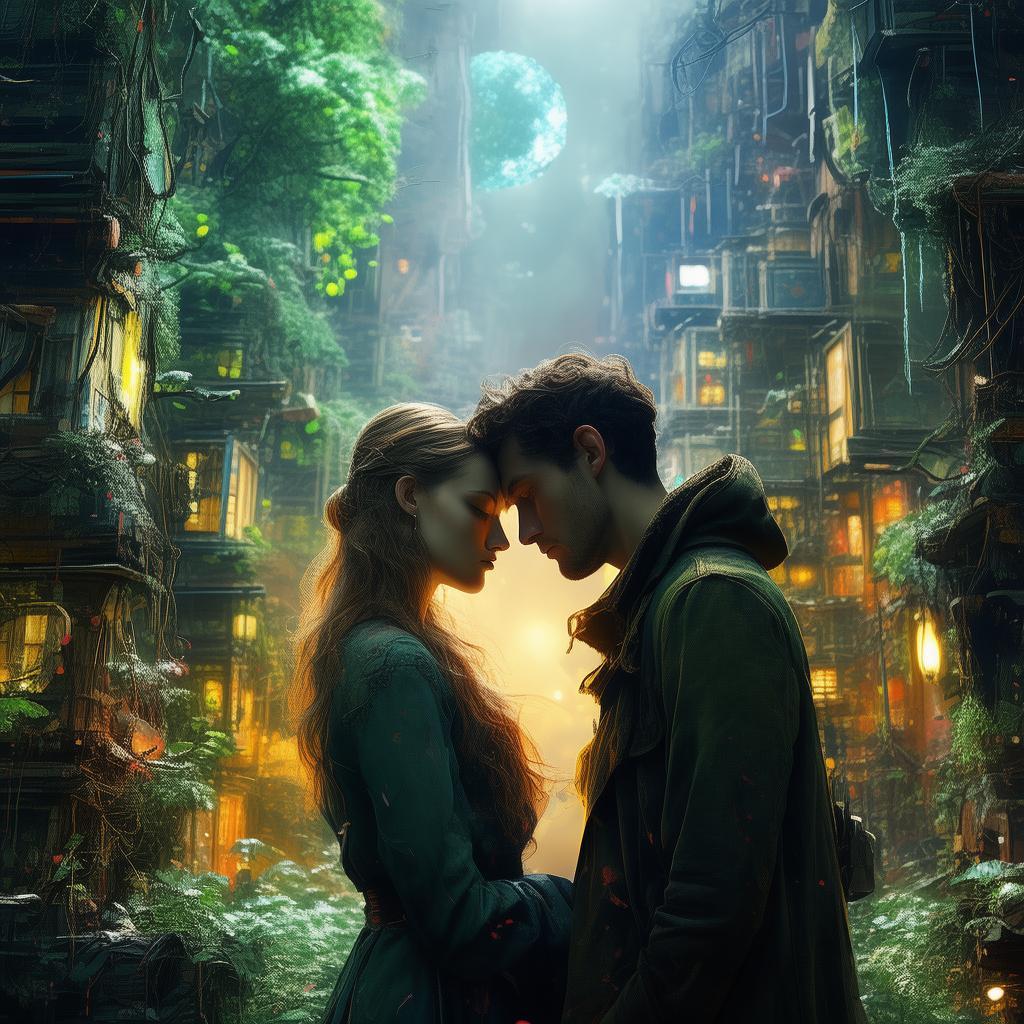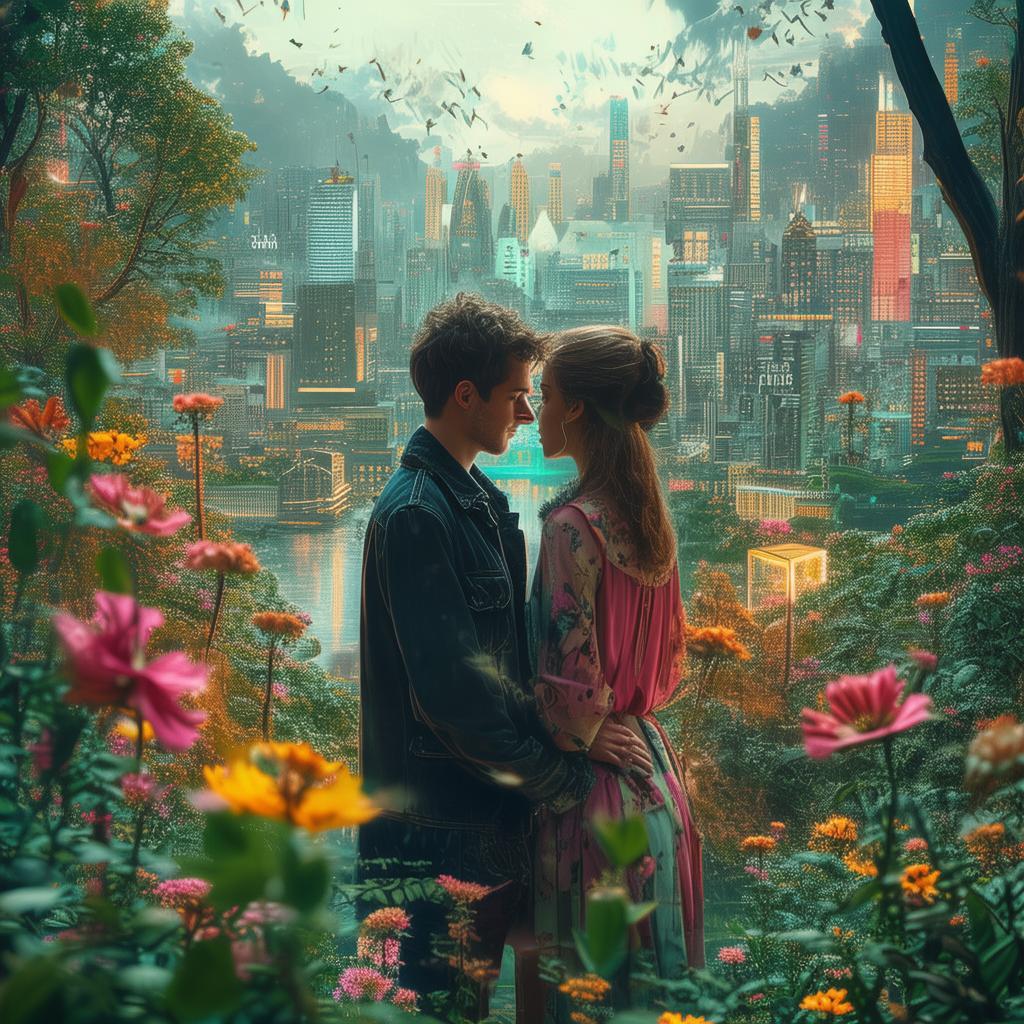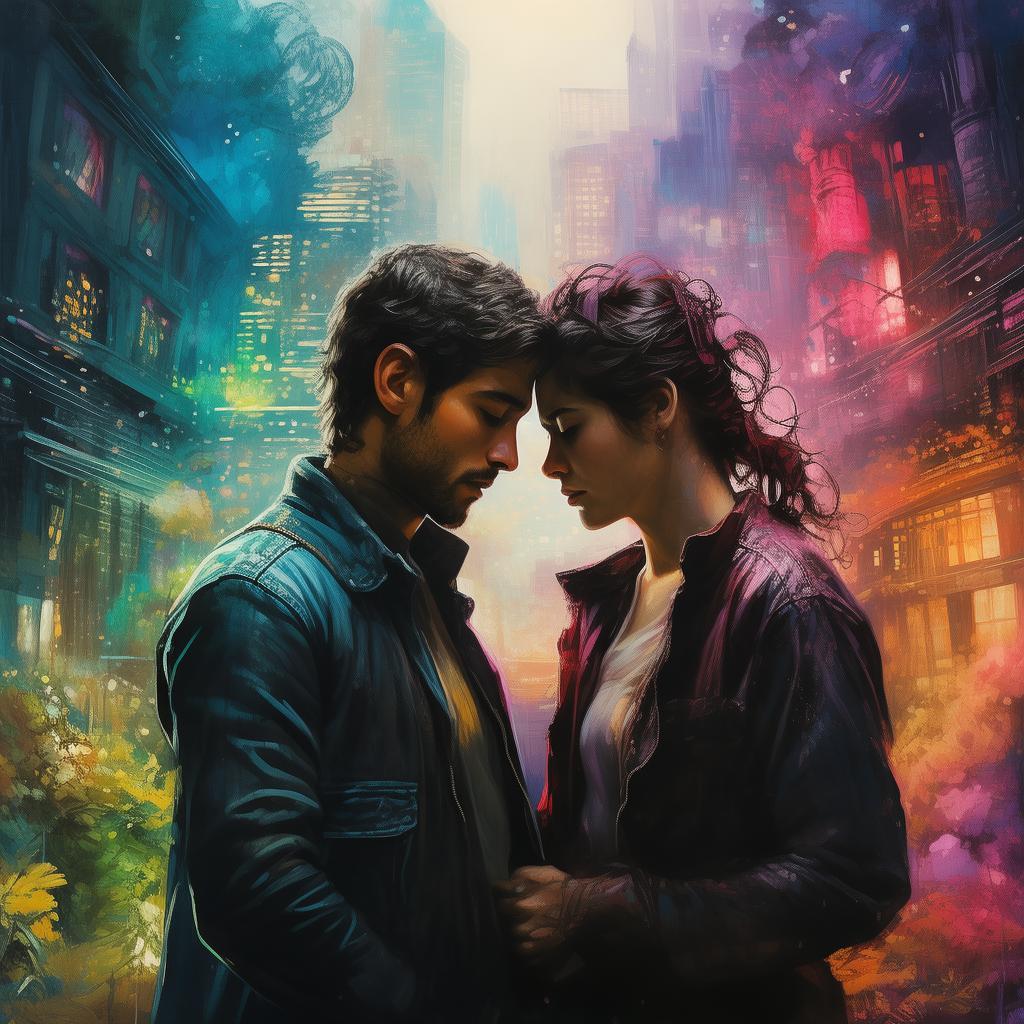The Lure of the Golden Pavilion: A Love Story of Forbidden Passion
In the serene city of Hangzhou, where the West Lake shimmers like a sapphire under the sun, there stood a pavilion of gold, its reflection dancing on the water's surface. This was the Golden Pavilion, a marvel of ancient architecture, a sanctuary for those seeking solace in the midst of a bustling world. Yet, within its walls, a forbidden love story was about to ignite.
The protagonist of this tale was not a commoner, but a princess, the daughter of a powerful and revered ruler. She was known for her beauty, grace, and intelligence, but her heart belonged to a commoner, a painter named Jing. Jing was a master of his craft, his brushstrokes weaving tales of the natural world into canvases that spoke of the soul. The princess was captivated by his art, and he, by her spirit.
Their love was a fire that burned brightly but was destined to be smothered by the cold winds of tradition and power. The princess's father, the ruler, could not bear the thought of his daughter loving a man of such low birth. He ordered Jing to leave the city, or face dire consequences. Yet, love was blind, and the two could not bear to be apart.
One evening, as the moonlight bathed the Golden Pavilion in a silvery glow, the princess and Jing met in secret. They spoke of their love, of dreams yet to be realized, and of the sacrifices they were willing to make. But their passion was like a storm, and soon it threatened to engulf everything around them.
The ruler, a man of cold resolve, became aware of the affair. His wrath was a tempest, and he ordered Jing to be executed. The painter, knowing that he could not live without the princess, chose to die by his own hand rather than face the ruler's justice. As he lay dying, he whispered his last words to the princess, who was too late to reach him.
Devastated by her love's loss, the princess retreated to the Golden Pavilion, her heart heavy with sorrow. She spent her days in meditation, her mind consumed by memories of Jing. She became a recluse, her beauty fading like the golden hues of the pavilion itself.
Years passed, and the ruler, softened by his own grief, allowed the princess to return to the pavilion. She spent her days there, painting and meditating, her art becoming a testament to her love and loss. She painted the Golden Pavilion, capturing its beauty and the pain it had become her home.
One day, as she stood before her latest masterpiece, a young painter named Ming approached her. Ming was struck by the princess's art and the story it told. He spoke of his admiration and asked to learn from her. The princess, seeing a kindred spirit in Ming, agreed.
As they worked together, the princess and Ming found solace in each other's company. Ming's love for the princess was genuine, and she, in turn, found comfort in his presence. But the weight of her past was heavy, and she could not bring herself to fully embrace Ming's affection.
One evening, as they stood before the Golden Pavilion, the princess confided in Ming the story of her forbidden love. Ming listened, his heart aching for the princess's pain. He realized that the only way to truly honor Jing was to help the princess find peace.
Together, they began to restore the Golden Pavilion to its former glory, a symbol of the love that had been lost and the love that was yet to be found. As they worked, the princess's heart began to heal, and she found herself opening up to Ming's love.

But fate was not done with them yet. The ruler, who had once been so harsh, now saw the love between the princess and Ming and approved of their union. The princess and Ming were married, and the Golden Pavilion became a place of celebration and love once more.
The story of the princess and Jing, of forbidden love and redemption, became a legend in Hangzhou. The Golden Pavilion, now a beacon of hope and love, stood as a testament to the enduring power of passion, even in the face of adversity.
In the end, the princess found peace, not just in the restoration of the Golden Pavilion, but in the love she shared with Ming. And the love story of the Golden Pavilion became a tale of triumph, a reminder that love, even in its darkest moments, can find a way to shine.
✨ Original Statement ✨
All articles published on this website (including but not limited to text, images, videos, and other content) are original or authorized for reposting and are protected by relevant laws. Without the explicit written permission of this website, no individual or organization may copy, modify, repost, or use the content for commercial purposes.
If you need to quote or cooperate, please contact this site for authorization. We reserve the right to pursue legal responsibility for any unauthorized use.
Hereby declared.









